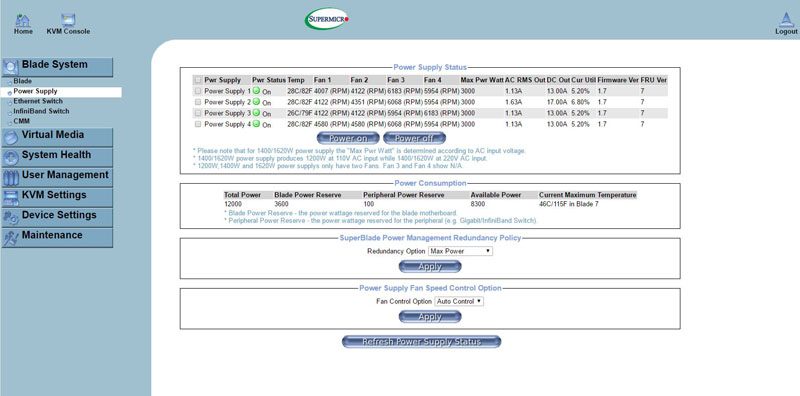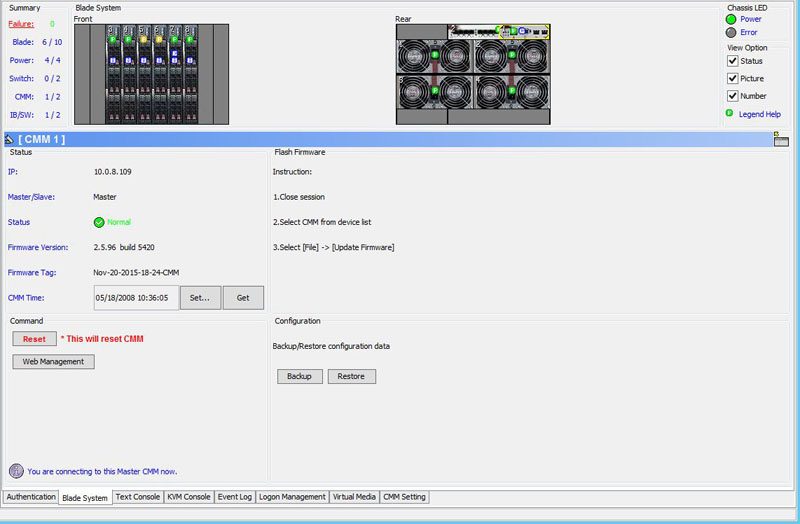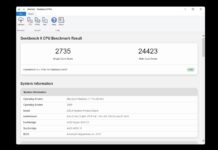This portion of our Supermicro SuperBlade GPU system review will focus on chassis management options. We had access to two SuperBlade chassis in our lab which allowed us to manage not just one chassis at a time, but also multiple chassis. Supermicro does have more advanced management solutions, such as SSM (Supermicro Server Manager.) We did not get a chance to finish setting up SSM for this review, so we do plan to re-visit it in a future piece.
Like a standard Supermicro server, or one of the Supermicro GPU blades, the chassis itself has a dedicated, out-of-band network interface for management. You can attach this standard Ethernet interface to an out-of-band management network and access the chassis management remotely. For example, I was able to check-into the server from a New York Yankees game in Yankee Stadium while the server was in our Sunnyvale, California data center to direct remote hands work.
SuperBlade Chassis Management – WebGUI
One way to check on the server is via the WebGUI. This is a functional interface where you can see things like the status of various components including blades and switches. You can even see information like management IP addresses for each of the blades, what the blade type and where the blade is located. In a pinch, this is not only a functional management interface but it is an extremely easy way to communicate with remote hands in a data center for support. Each blade is numbered so if you need a remote technician to pull a blade and upgrade RAM capacity, this can help avoid confusion.

You can drill down and give each blade’s management interface a name, check sensor readings, set power loss policies and other common management tasks directly from the WebGUI.

Aside from the blade management, you can perform some management tasks on the onboard switch, chassis management module.

You can also configure basic chassis settings like authentication and user access controls and set power policies.

The Web GUI is nice, but we ended up using the Supermicro IPMIview tool for day-to-day work.
SuperBlade Chassis Management – IPMIview
What became our preferred management option was using IPMIview. Supermicro IPMIview provides a Java desktop application that has a graphical user interface that lets you explore and manage SuperBlade systems and selected components. We have been using IPMIview for years to manage single servers. IPMIview has additional features and functionality for the SuperBlade platform.
As you can see, we have selected the chassis management module (CMM) and can see the IP address, firmware and other key options.

We can also set the system’s overall fan profiles using a single toggle. This is an example of where management is much easier in the SuperBlade platform than standard stand-alone servers. In stand alone servers, switching from power saving fan modes to high performance modes would require changing the setting on each server. Here we can manage from a chassis level.

We can also view and manage blades directly from the interface. One can see we selected the blade in slot 7. From here we can see the BMC IP address and sensor information. You can see the node is also opened in its own IPMIview tab.

Being able to target machines quickly even allows for KVM/ virtual media to be accessed much more efficiently than with single servers.
In addition to the nodes and chassis management modules, you can manage some of the basic switch information remotely. For example, we can set an out-of-band management IP address for the switch in IPMIview. We will look at the built-in networking later, but this shows how you can manage centrally or find the individual out of band management interfaces for applicable components.

Moving to the power supply, you can turn on/ off the system from this centralized view and even monitor fan speeds and power consumption information.

IPMIview also has Android and iOS versions so you can setup remote access (e.g. at a Baseball game across a continent) and manage systems remotely, even without a laptop. We were able to successfully have hardware swapped in the chassis using IPMIview for Android and clearly explain the work we wanted done to the data center technician.
Final Thoughts
Compared to managing individual servers, this is a much better solution. We were able to provide remote technician instructions clearly from 2500 miles and three time zones away which was very impressive. We were also able to monitor the progress of the work remotely with the telemetry information provided through the SuperBlade platform. Supermicro has two distinct tiers of management. Each component (switches, the chassis management module(s) and blades) can be managed in a centralized manner. Additional drill-down features and functions can happen at a component level as well. Compared to managing individual servers, within a month we were easily able to notice the benefit from having this centralized chassis management.
In terms of management, networking, and the GPU blades themselves (including performance) we can direct you to the other parts of this review:
- Part 1: Supermicro SuperBlade System Review: Overview and Supermicro SBE-710Q-R90 Chassis
- Part 2: Supermicro SuperBlade System Review: Management
- Part 3: Supermicro SuperBlade System Review: 10GbE Networking
- Part 4: Supermicro SuperBlade System Review: The GPU SuperBlade
Check out the other parts of this review to explore more aspects of the system.




